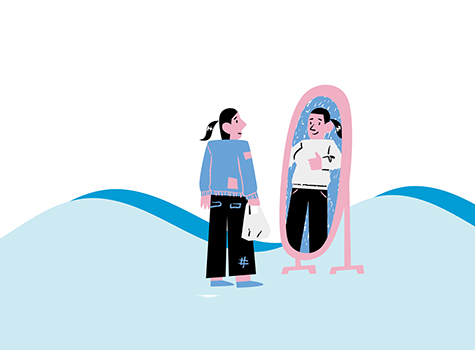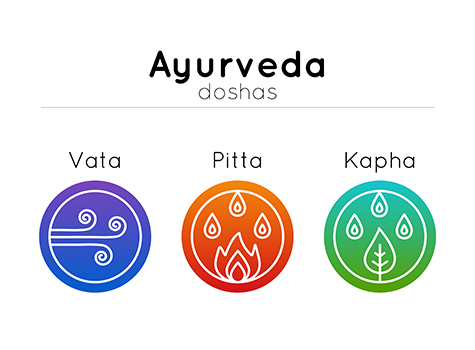
Colorectal cancer is a cancer that starts in the colon or the rectum. These cancers can also be named colon cancer or rectal cancer, depending on where they start. Colon cancer and rectal cancer are often grouped together because they have many features in common. Most colorectal cancers start as a growth on the inner lining of the colon or rectum. These growths are called polyps. Some of these polyps can turn cancerous and spread in the colon. Colorectal cancer is the third most common cancer in the United States and the second leading cause of death from cancers that affect both men and women. Colorectal cancer affects all racial and ethnic groups and is most common in people ages 50 and older.
Risk factors for colon cancer include:
• Low-fiber, high fat, high animal protein diet
• Being overweight/obese
• Smoking
• Heavy alcohol use
• An inactive lifestyle
• A family history of colon or rectal polyps or colorectal cancer
• Inflammatory bowel disease (Ulcerative colitis or Crohn’s disease)
• Genetic syndromes
Possible symptoms of colon cancer may include:
• Blood in or on the stool
• Change in bowel habits
• Change in stool consistency (harder stools)
• General, unexplained stomach discomfort
• Frequent gas, pains, or indigestion
• Unexplained weight changes/weight loss
• Chronic fatigue
Role of Diet and Nutrition
Prevention of colon cancer and all gastrointestinal issues starts much earlier in life. What we eat as babies, and our nutritional intake throughout our childhood, plays an important role in our gut health.
Our gut environment starts developing even before we are born. Here are some factors that have proven to be best for having the healthiest gut microbiome:
• Mother eating a wide variety of foods during pregnancy
• Child born via natural birth
• Breastfeeding
• Feeding a wide variety of foods during infancy and childhood
• Continuing to eat a diet high in fiber and low in fat
Benefits of eating a diet rich in fiber:
• Fiber slows the rate that sugar is absorbed into the bloodstream: When you eat foods high in fiber, such as beans and whole grains, the sugar in those foods is absorbed slower, which keeps your blood glucose levels from rising too fast. This helps with feeling fuller for a longer time and prevents you from overeating.
• Fiber prevents build up in the intestines: When you eat foods rich in fiber, it helps move the undigested bulk through your intestines smoothly. This helps with satiety as well as preventing diverticulosis.
• Fiber cleans your colon, acting like a scrub brush. The scrub-brush effect of fiber helps clean out bacteria and other buildup in your intestines, and reduces your risk for colon cancer.
• Fiber helps keep you regular: A high-fiber diet helps you have soft, regular bowel movements, reducing constipation.
• Fiber helps with lowering cholesterol: Soluble fiber binds with excess cholesterol and helps remove it from the body.
• Fiber is pre-biotic: Probiotic gut bacteria use the fiber from foods to produce beneficial molecules that help lower inflammation and increase immunity. Some of these molecules are also being studies for heart health benefits, especially lowering blood pressure. The gut bacteria also use these fibers to produce serotonin which helps improve mood and prevent anxiety and depression.
What is fiber?
Fiber is the part of plant foods that our bodies can’t digest or absorb. It is found in fruits, vegetables, beans, peas, lentils, nuts, seeds, and whole grains. It is important to remember that animal foods do not have any fiber. Therefore a high protein low carb diet will always be lower in fiber.
There are 2 kinds of dietary fiber: insoluble and soluble. We benefit from both.
• Soluble fiber comes from fruit, some vegetables, oats, beans, peas, lentils, and barley. When mixed with liquid, it forms a gel, which helps control blood sugar and reduces cholesterol.
• Insoluble fiber comes from fruits, grains, and vegetables. It adds bulk and acts like a brush to clean out the colon. It helps food pass through the digestive tract and prevents constipation and diverticulosis.
How much fiber do you need?
The American Heart Association recommends between 25 and 38 grams of fiber a day in a well-balanced diet. The average American diet provides only about 10 grams fiber on average.
How to add more fiber to your diet:
• Eat a variety of vegetables in raw and cooked form: salad, soup, stir-fry, subzi; avoid juice
• Eat 1-2 colorful fruits daily; avoid juice
• Include a variety of whole grains such as cracked wheat, brown rice, wild rice, oats, barley, jowar, bajra, millet, quinoa
• Include a variety of pulses and legumes, lentils, beans, peas
• Eat 1-2 small servings of nuts and seeds
• Choose breads, cereals, tortillas, and crackers that list a whole grain as the first ingredient on the label. To find whole-grain foods, look for the words 100 percent whole wheat or whole grain in the ingredient list. “Multigrain,” “wheat,” and “enriched flour” do not mean whole grain.
• Avoid processed packaged foods
• Be aware of marketing gimmicks and don’t get fooled by labels
Other Tips for Colon Health:
• Drink an adequate amount of water (~2.5 liters)
• Avoid soda, energy drinks and beverages with artificial sweeteners
• Eat a low fat diet. Avoid fried and other high fat foods; avoid simple starches
• Limit consumption of salt and sugar. Use herbs and spices to season foods
• Limit or avoid animal proteins; move toward a plant-based diet
• Get regular physical activity
• Eat small meals at regular intervals; practice mindful eating habits
———-
Parul Kharod, MS, RD, LDN is a registered dietitian and licensed nutritionist and works as a Clinical Dietitian with Outpatient Nutrition Services at WakeMed Hospital in Cary and Raleigh. She can be reached at [email protected]
Posted: Monday, March 11, 2019



